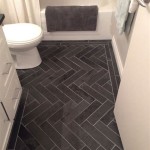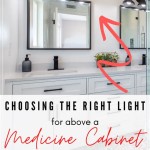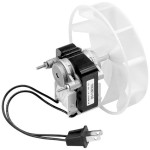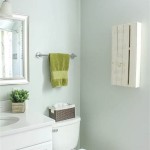Best Neutral Bathroom Paint Colors
Selecting the optimal paint color for a bathroom requires careful consideration of several factors. Light, size, and existing fixtures significantly influence the overall ambiance of the space. Neutral paint colors offer a versatile and timeless appeal, creating a calming and sophisticated atmosphere while providing a blank canvas for incorporating various design elements. This article presents a curated selection of the best neutral bathroom paint colors, exploring their characteristics and suitability for different bathroom styles.
Understanding the Appeal of Neutral Colors in Bathrooms
Neutral colors, encompassing shades of white, gray, beige, and greige, possess a unique ability to enhance the perception of space and light within a bathroom. Their understated elegance complements a wide range of architectural styles and allows for flexibility in decorating. Neutral palettes create a tranquil environment, ideal for relaxation and rejuvenation. Moreover, these colors serve as a grounding element, harmonizing with bolder accent colors and allowing the texture of materials such as tile, stone, and wood to take center stage.
The inherent adaptability of neutral colors makes them a particularly wise choice for bathrooms. Bathrooms often feature a variety of fixed elements, such as tile, countertops, and fixtures, that are expensive and difficult to change. Opting for a neutral paint color allows homeowners to update the look of the bathroom without having to renovate the entire space. By simply changing accessories and linens, the bathroom can be easily transformed to reflect current trends or personal preferences.
Furthermore, the psychological impact of neutral colors should not be overlooked. They are associated with feelings of calmness, cleanliness, and serenity, all of which are highly desirable qualities in a bathroom setting. A well-chosen neutral color can transform a small, cluttered space into a spa-like sanctuary, promoting relaxation and well-being.
Top Neutral Paint Colors for Bathrooms
The following selection showcases some of the most popular and versatile neutral paint colors for bathrooms, categorized by their dominant hue. Each color description includes details regarding undertones, light reflectance value (LRV), and ideal applications.
Whites
White is a classic and timeless choice for bathroom walls, creating a clean and airy feel. However, not all whites are created equal. Understanding the subtle undertones of different white paints is crucial to achieving the desired effect.
Benjamin Moore Simply White OC-117: This is a warm white with a slight yellow undertone. With an LRV of 89.5, it reflects a significant amount of light, making it a perfect choice for smaller bathrooms or those with limited natural light. It pairs well with warm wood tones and natural stone.
Sherwin-Williams Pure White SW 7005: A softer white with a hint of warmth, Pure White offers a more forgiving alternative to stark, clinical whites. Its slightly creamy undertones make it an excellent choice for bathrooms with cool-toned fixtures and finishes. Its LRV of 84 ensures ample light reflection.
Farrow & Ball Wimborne White No. 239: This off-white has a subtle yellow undertone that creates a warm and inviting atmosphere. Its versatility allows it to complement both traditional and modern bathroom designs. This white is a good balance between warm and cool, making it adaptable to different lighting conditions.
Grays
Gray provides a sophisticated and contemporary alternative to white, offering a calming and elegant backdrop for bathroom décor. The key to selecting the right gray lies in identifying its undertones.
Benjamin Moore Gray Owl OC-52: This popular light gray possesses subtle green undertones, giving it a slightly ethereal quality. Its LRV of 65.7 allows it to reflect light effectively, while still providing a sense of depth and dimension. Gray Owl works well in bathrooms with natural light and pairs beautifully with white trim and chrome or brushed nickel fixtures.
Sherwin-Williams Repose Gray SW 7015: A warm gray with subtle greige undertones, Repose Gray is a versatile choice that complements a wide range of design styles. Its LRV of 58 allows it to create a calming and serene atmosphere, while still providing enough light reflection for a bathroom setting. It pairs well with both warm and cool-toned accents.
Benjamin Moore Hale Navy HC-154: While technically a navy, Hale Navy is often used as a deep, dramatic neutral. Its rich, saturated color adds a sense of sophistication and luxury to bathrooms. Due to its low LRV, it is best suited for larger bathrooms with ample natural light or well-placed artificial lighting.
Beiges
Beige offers a warm and inviting alternative to cooler neutrals, creating a cozy and comfortable atmosphere in the bathroom. The key to selecting the right beige is to avoid those with overly yellow or orange undertones, which can appear dated.
Benjamin Moore Revere Pewter HC-172: Although often categorized as a gray, Revere Pewter is technically a light greige, a blend of gray and beige. Its LRV of 55.11 places it in the mid-tone range, providing warmth and depth without overwhelming the space. It's extremely versatile and complements various design styles, from traditional to modern.
Sherwin-Williams Accessible Beige SW 7036: A warm and inviting beige with subtle greige undertones, Accessible Beige is a versatile choice that complements a wide range of design styles. Its LRV of 58 makes it suitable for bathrooms with moderate natural light. It pairs well with natural wood tones and warm metallic accents.
Benjamin Moore Natural Cream OC-14: A classic and timeless beige with subtle yellow undertones, Natural Cream creates a warm and inviting atmosphere in the bathroom. It is a versatile choice that complements both traditional and transitional design styles. Its LRV ensures sufficient light reflection for a comfortable and inviting space. This color works well with warm-toned fixtures and wood accents.
Griege
Greige, a blend of gray and beige, offers the best of both worlds. It provides the warmth of beige with the sophistication of gray, creating a balanced and versatile neutral that works well in a variety of bathroom settings.
Benjamin Moore Edgecomb Gray HC-173: A popular greige with a balanced mix of gray and beige undertones, Edgecomb Gray is a versatile choice that complements a wide range of design styles. Its LRV of 63.04 makes it suitable for bathrooms with moderate natural light. It pairs well with both warm and cool-toned accents.
Sherwin-Williams Agreeable Gray SW 7029: Another widely used greige, Agreeable Gray leans slightly cooler than Edgecomb Gray, with a more prominent gray base. Its LRV of 60 makes it a versatile choice for various bathroom sizes and lighting conditions. This color is a safe bet for those seeking a modern, sophisticated look.
Farrow & Ball Elephant's Breath No. 229: Despite its name, Elephant's Breath is a sophisticated greige with warm, earthy undertones. It creates a sense of understated elegance in the bathroom and pairs well with natural materials and muted color palettes. Its depth of color adds a touch of drama without being overwhelming.
Key Considerations When Choosing a Neutral Paint Color
Selecting the perfect neutral paint color for a bathroom involves more than just choosing a shade that appeals to personal taste. Several factors should be taken into account to ensure that the chosen color complements the existing features of the bathroom and creates the desired atmosphere.
Lighting
Lighting is a crucial factor to consider when selecting a paint color. Natural light, artificial light, and the interplay between the two can significantly alter the appearance of a color. It is essential to test paint samples in the bathroom under both natural and artificial lighting conditions to see how the color shifts throughout the day. Bathrooms with limited natural light may benefit from lighter, more reflective neutral colors, while those with ample natural light can handle deeper or warmer shades.
The type of artificial lighting in the bathroom also influences the perceived color of the walls. Incandescent lighting tends to cast a warm, yellow glow, while fluorescent lighting can create a cooler, bluer tone. LED lighting offers a more neutral and consistent light source, but it is still important to test paint samples under the specific lighting fixtures used in the bathroom.
Fixtures and Finishes
The existing fixtures and finishes in the bathroom, such as tile, countertops, and cabinets, should also be considered when selecting a paint color. The goal is to choose a color that complements these elements and creates a cohesive and harmonious overall look. For example, if the bathroom features cool-toned tile, such as gray or blue, a cool-toned neutral, such as a light gray with blue undertones, may be a suitable choice. Conversely, if the bathroom features warm-toned tile, such as beige or brown, a warm-toned neutral, such as a light beige with yellow undertones, may be a better option.
The finish of the fixtures and hardware should also be taken into account. Chrome and brushed nickel fixtures tend to pair well with cool-toned neutrals, while brass and oil-rubbed bronze fixtures complement warm-toned neutrals. It is important to consider how the paint color will interact with these elements to ensure a cohesive and visually appealing design.
Room Size
The size of the bathroom is another important factor to consider when selecting a paint color. Lighter neutral colors tend to make small bathrooms appear larger and more spacious, while darker neutral colors can create a more intimate and cozy atmosphere. In smaller bathrooms, it is often best to stick to lighter, more reflective colors to maximize the sense of space. However, in larger bathrooms, it is possible to incorporate darker or more saturated neutral colors without overwhelming the space.
The height of the ceiling should also be taken into account. In bathrooms with low ceilings, painting the ceiling a lighter shade of the wall color can help to create the illusion of height. Conversely, in bathrooms with high ceilings, painting the ceiling a darker shade can help to create a more balanced and proportional look.

Exactly How To Choose A Neutral Bathroom Paint Color Hampton Redesign

Exactly How To Choose A Neutral Bathroom Paint Color Hampton Redesign

Spa Like Paint Colors For Bathrooms Bathroom Relaxing Painting

Choosing Bathroom Paint Colors For Walls And Cabinets

10 Beautiful Bathroom Paint Colors For Your Next Renovation Wow 1 Day Painting

Best Bathroom Paint Colors Forbes Home

The 9 Best Powder Room Paint Colors For 2024

11 Best Bathroom Paint Colors Jenna Kate At Home

Best Bathroom Paint Colors

Exactly How To Choose A Neutral Bathroom Paint Color Hampton Redesign







